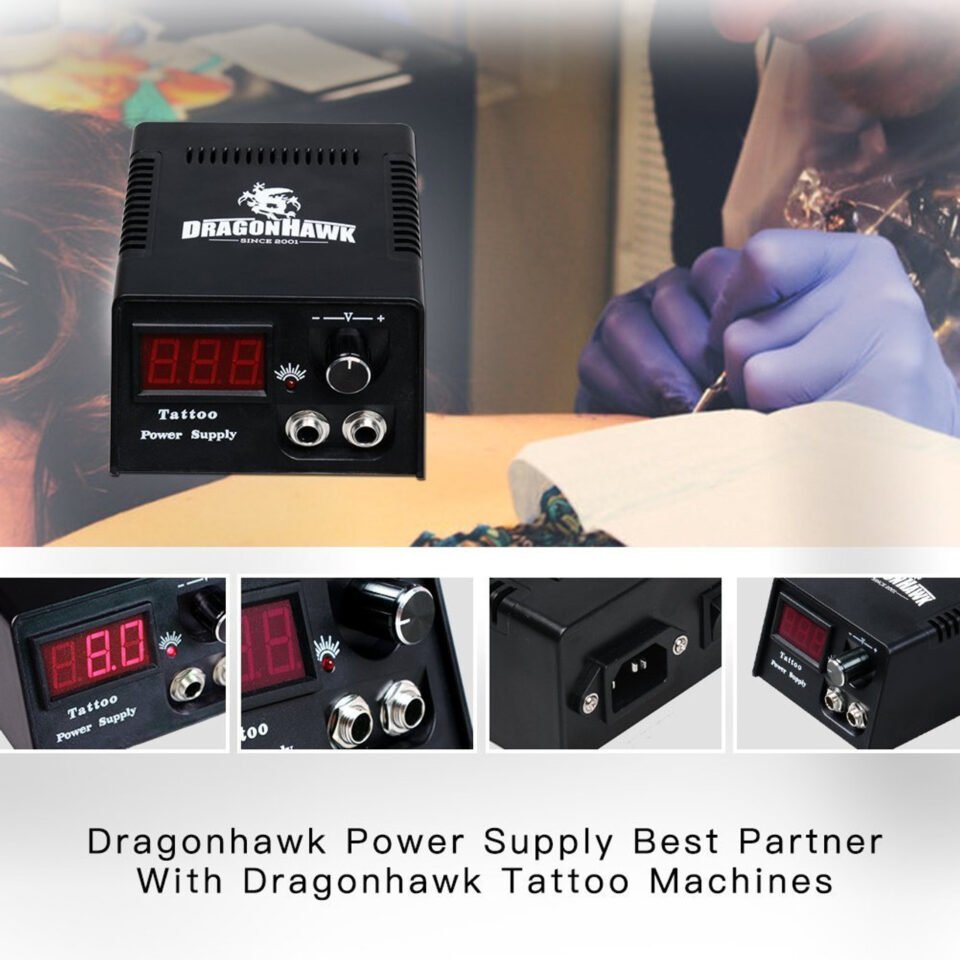Tattooing is not just any art. Not only does it require incredible precision, given that the results can’t (easily) be erased, but maximum hygiene and sanitary care. Every tattoo artist must get to know their tools and products inside out to achieve great results and take care of their clients in the best way possible.
Polilla (@polillatattoo) is a tattoo artist and digital designer who has her own studio in Santiago de Chile. One by one, she talks us through the different items that make up a basic tattoo kit and what we should keep in mind when assembling our own.
1. Tattoo machines
There are coil machines and rotary machines. Rotary tattoo machines have motors that make the needle move back and forth. Coil machines are powered by an electromagnetic coil, which moves an armature bar up and down.
It is not that one of these machines is better than the other, they are simply used for different techniques and results. The main difference is that there are some rotary machines that you can use with any type of needle to create lines, shadows, fills, and dots. However, coil machines are designed for more specific uses.
2. Power supplies
Power supplies send electricity to the machine so it moves the tattoo needle. There are different types available:
Polilla uses one that connects directly to the power source through a plug, such as the Critical. The latter has a digital display showing the voltage and other information that we can regulate. There are also wireless options or analog power supplies that don’t have digital displays.
3. Cables
When it comes to cables, we have different types of clipcords. The clip cord sends the power from the power source to the machine.
Each machine has different inputs. Often you might encounter compatibility issues that need to be solved and will have to adapt what you have.
4. Needles
There are traditional needles, which are mainly used in coil machines, and there are cartridge needles. The latter is used with a special grip and can be used with every type of machine.
Choosing tattoo needles is similar to choosing paintbrushes: there are different types of tips and finishes. There are different needles for fine lines, color fills, and shading.
Needles are categorized by thickness and the number of needles that are soldered together to make them: many tattoo needles comprise a set of needles that are tightly packed together.
5. Grips
Your grip is where you rest your hand and hold your needle. It has a tip which is where the needle rests inside.
Grips come in different sizes which are suitable for different types of needles. You can buy all sorts of different grips or use rubber grip covers to change the surface.
6. Black ink
Black ink can be used either for lines or fills but not all black inks are suitable for both.
There is also Greywash. Greywash is a black ink that dissolves in different solutions. In addition, the Shader Solution allows us to dilute the black and achieve our own custom shades of gray.
Read also: Essentials clothing


